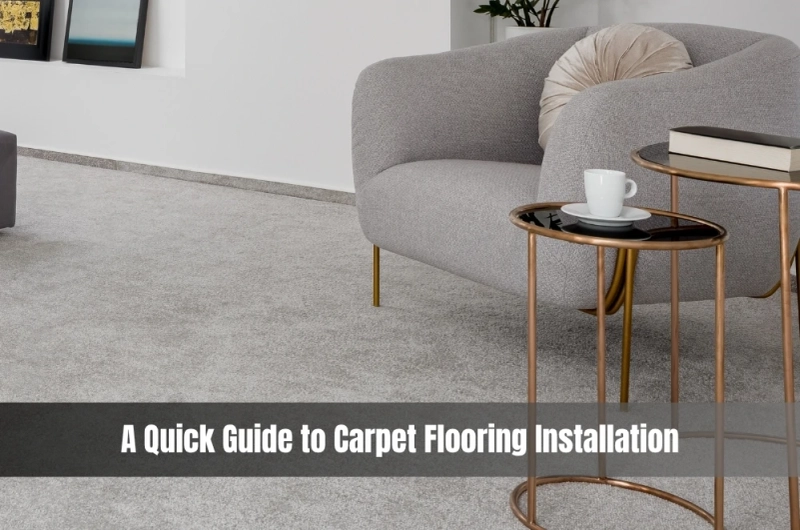Thinking about putting in new carpet? It could be a bedroom. Maybe the whole house. Either way, the right carpet floor installation can do more than just freshen up a room — it changes how it feels. Literally, but if you’ve never done it before, it’s easy to get overwhelmed. So many options, so many installers, and everyone seems to say something different. This isn’t a technical how-to. It’s just a real-world guide to what actually happens when you book a carpet install — what to expect, what questions to ask, and how to make sure you’re not paying for things you don’t need.
Why carpet?
Look, it’s not hard to see why people go for carpet. It’s soft. Warm. Quiet. Makes a house feel less echoey — and let’s be honest, it’s a bit easier on the feet in winter. But the real kicker? It’s versatile and, depending on the type you pick, can be way more budget-friendly than timber or tile.
Plus, with all the new blends and stain-resistant fibres out there, it’s not just for old-school lounges anymore.
Choosing your carpet: more than colour
Before you even think about installers, you’ve got to figure out what kind of carpet suits the room — and your life. Pets? Kids? That one friend who always spills red wine?
Think about where it’s going, how much traffic it’ll get, and whether you want something soft and cosy or tough and practical. A good installer who deals with carpet floor installation regularly will help you work that out, based on what actually works, not just what looks nice in the showroom. If you’re still unsure, get a few samples. Place them down, walk on them. Look at them in daylight, then under lamplight. You’d be surprised how much it changes things.
Preparing for installation day
Once you’ve picked your carpet and booked the installer, there’s a bit to sort out. And trust me, the smoother your prep, the quicker they can get in and out.
Here’s what usually happens:
- You clear out furniture (or pay extra for movers)
- They rip up the old stuff
- Subfloors get cleaned and fixed
- Underlay goes in
- Then the carpet’s stretched, trimmed, and tucked in place
Some installers will take away the old carpet for you. Others won’t. Just ask upfront. Same goes for trims and edges — sometimes those are quoted separately.
Safety bits most people forget
Stairs? Entryways? Anywhere people might trip? That’s where safety really matters.
Something people don’t always think about is slip resistant carpet stair treads. Not glamorous, but they stop falls, especially in multi-level homes or offices. And yep, SafeWork NSW has a whole page about it if you want the official word.
Especially if you’ve got kids or anyone with mobility concerns — don’t skimp here.
Mistakes to avoid with carpet installs

Everyone’s seen those dodgy DIY jobs or fast-track carpet installs that ripple and peel at the edges after a few months. Here’s what to watch out for so you don’t end up redoing it:
- Skipping the underlay – This is your shock absorber. It matters.
- Choosing the wrong pile – A plush pile in a hallway? Not a great idea. Too much wear and tear.
- Rushing the prep – Dirty or uneven subfloors will show — or worse, smell — through your new carpet.
- Hiring just on price – Cheapest isn’t always best. Ask about warranty, experience, and aftercare.
Had a friend once who chose a cut pile carpet for their front entry. Looked amazing... for about three weeks. Now it’s flattened and frayed. Lesson learnt.
When is DIY not a good idea?
You can technically lay carpet yourself. YouTube says so. Bunnings sells all the gear. But unless it’s a small room or a short-term fix, we’d say — maybe not.
Here’s why:
- Stretching carpet needs the right tools — knee kickers, power stretchers
- Seam matching takes patience and skill
- You’ll need to cut around corners, doors, trims, and it needs to be exact
- Mistakes aren’t cheap to fix (especially on stairs)
And when it comes to safety? Especially on stairs, you’re far better off with a professional fitting that includes proper slip-resistant carpet stair treads — not just glue and hope.
Aftercare matters
Once it’s down, you want it to stay looking good. So don’t skip the basics:
- Vacuum regularly (especially for cut pile)
- Clean up spills straight away
- Get it professionally steam cleaned every 12–18 months
If something looks off — rippling, loosening, or weird smells — contact your installer. A lot of them offer a workmanship guarantee, especially if it’s under 12 months.
Still weighing it up?
If you’re new to this or just want to see how others have done it, check out a neutral guide on carpet installation — something not written by a sales team, but by someone who’s actually been through the process.
You’ll get a better feel for what questions to ask and what to avoid. And maybe even get a few tips for getting it done cheaper, without cutting corners.
Final thoughts
Carpet changes a room. It just does. But doing it right means thinking beyond colour swatches. A good installer isn’t just someone with tools — it’s someone who’ll be honest, ask about how you use the room, and leave you with a result that feels like home.
Whether it’s one room or a full fit-out, proper carpet installation is one of those things you only regret if you try to cut corners. So take your time, ask the right questions, and don’t forget to feel it under your feet before you buy.


